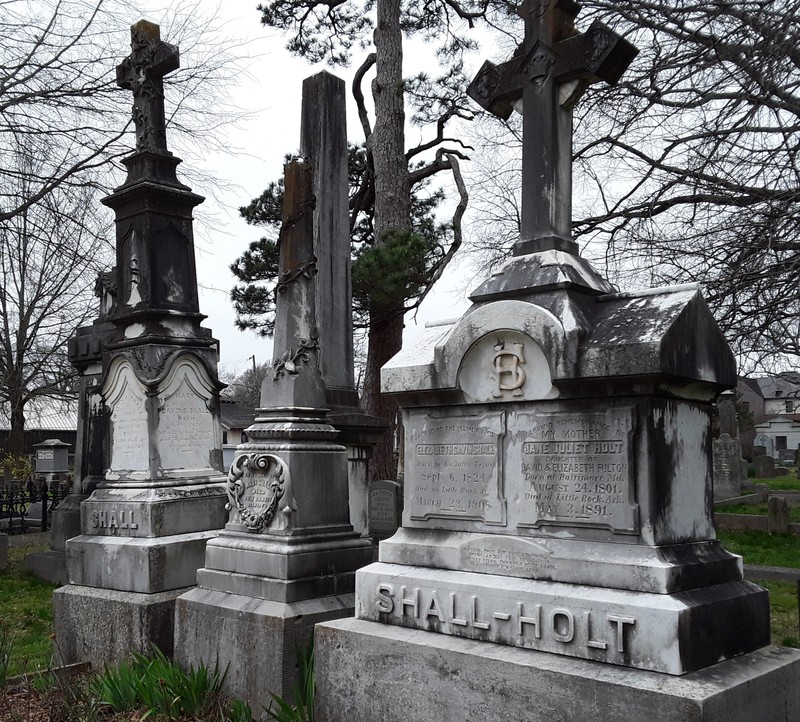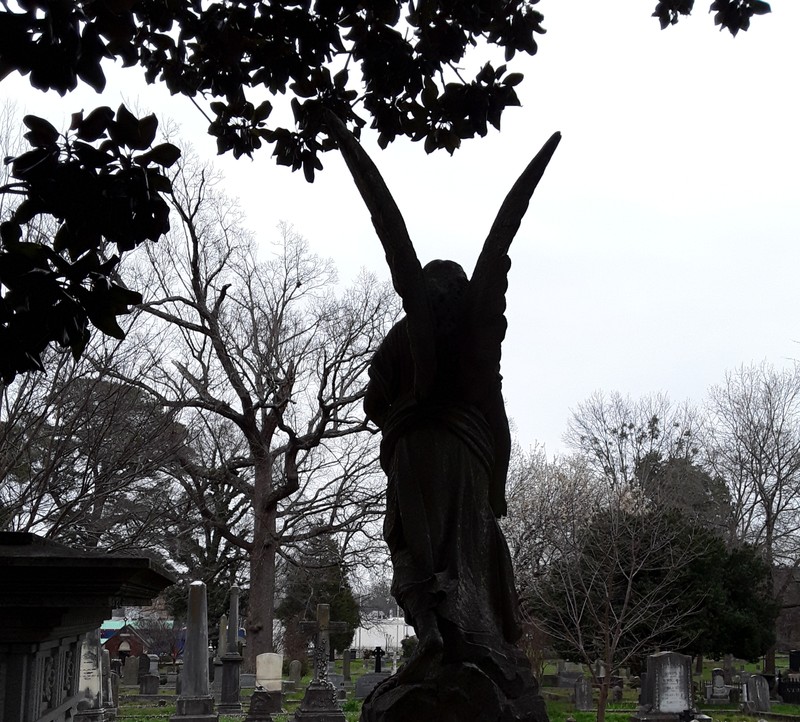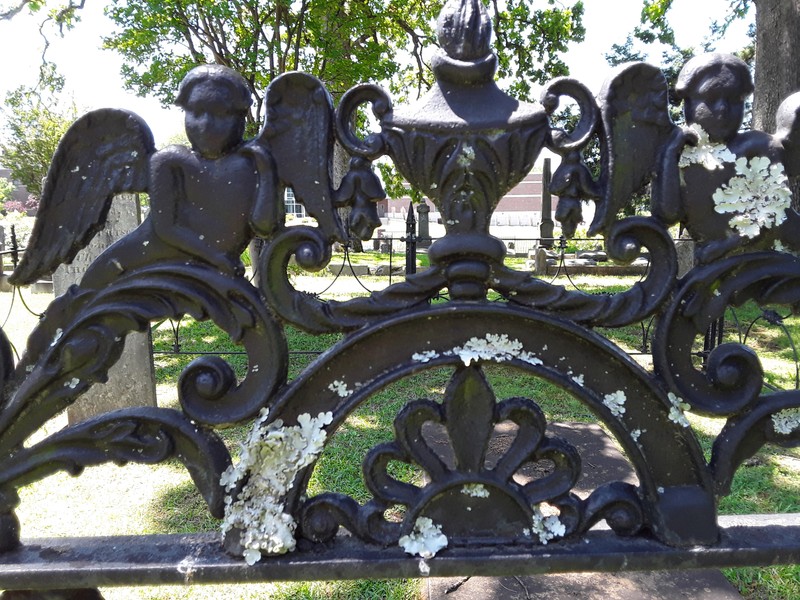Mount Holly Cemetery
Introduction
Text-to-speech Audio
Images

Angel Statue at Mount Holly Cemetery

Detail on Wrought Iron Gate in Mount Holly Cemetery

Backstory and Context
Text-to-speech Audio
Mount Holly is a long-time fixture of the Quapaw Quarter and downtown Little Rock. It was founded in 1843, when prominent Little Rock businessmen Roswell Beebe and Chester Ashley deeded four blocks to the young city of Little Rock for use as a cemetery. Before then, the dead were buried in private family cemeteries or in a small cemetery where the Federal Building now stands on Capitol Avenue and Gaines Street. Since that time, the city has grown dramatically, changing the old landscape which allowed for the previous methods of informal burial.
Today, the remains of several hundred persons rest at Mount Holly Cemetery. The people buried here are, as the website for the cemetery states, a microcosm of American history. Here are found military veterans of every American conflict from the American Revolution to the Gulf War. Further, the cemetery is the resting spot of people of all races and walks of life. For example, there are leading civic figures and also Quatie, or Elizabeth Ross, the wife of Cherokee chief John Ross, who died en route to Indian Territory in 1839 as she traveled the Trail of Tears. Quatie was first buried at the Capitol Avenue cemetery; her remains, along with those of a number of others, were reinterred at Mount Holly later, in the Albert Pike family plot.
As are so many of the landmarks of the Quapaw Quarter, Mount Holly Cemetery is listed on the National Register of Historic Places, to which it was added in 1970.
Sources
https://encyclopediaofarkansas.net/entries/quapaw-550/
http://www.quapawtribe.com/401/Tribal-Name
http://www.historicarkansas.org/exhibits/we-walk-in-two-worlds
https://encyclopediaofarkansas.net/entries/mount-holly-cemetery-49/
http://mounthollycemetery.org/
